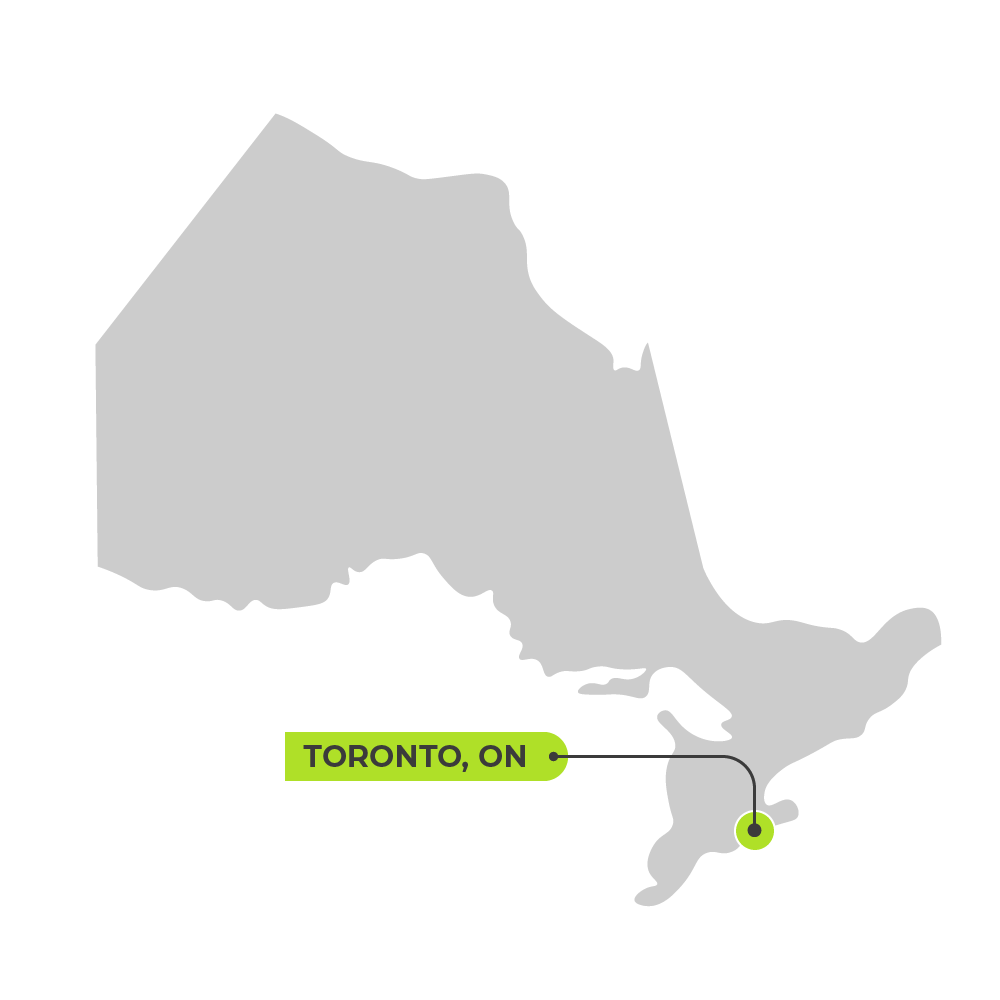
The City of Toronto, ON, paired its water utility infrastructure with Enwave’s deep lake water cooling system to cool the city’s downtown and provide residents with cleaner drinking water.
Results

80+
buildings served in downtown Toronto
832 million litres
of water saved annually

55 megawatts
of energy saved per year
In 2003, with coal a major source of power in Ontario and climate change a growing concern, Toronto’s city council set out to improve air quality, reduce greenhouse gas (GHG) emissions and support renewable energy initiatives. At the time, Enwave District Energy Limited was heating and cooling 130 buildings in the downtown core using a central cooling plant that produced high levels of GHGs.
In an innovative move designed to benefit all involved, the City of Toronto formed an Energy Transfer Agreement with Enwave in 2004. Under the agreement, the city shares its water utility infrastructure with Enwave, giving the company access to the cold water of Lake Ontario before it enters the city’s distribution system as drinking water.


Using a heat transfer system, Enwave transfers thermal energy from its district cooling system to the cold drinking water. This re-chills the cooling water that circulates through a network of underground pipes to cool a number of buildings in the downtown core. This new, more passive and sustainable heat exchange technology replaced the energy-intensive cooling plant that was in place before the agreement.
The system has displaced 55 megawatts of energy per year from Toronto’s electricity grid (equivalent to powering eight hospitals) and saved 832 million litres of water per year (the volume of about 350 Olympic-size swimming pools).
After 15 years of successful operation, Enwave has expanded the deep lake water cooling system. Today, the system provides cooling to over 80 buildings, including critical care facilities, government buildings, data centres, universities, and commercial and residential towers.
The institutions and businesses tapped into the system enjoy significant savings. For instance, the Toronto General Hospital has freed up 20 to 30 percent of its capital funds, enabling the hospital to channel more resources into patient care, research and lifesaving equipment.
In early 2020, the City of Toronto and Enwave launched an environmental assessment to study the effects of expanding the capacity of the system to meet the city’s growing demand for cooling.
This investment in a shared infrastructure and distribution system is a clear winning formula that will continue to benefit Toronto’s businesses and residents long into the future.
This novel initiative, providing both drinking water and building cooling capacity to residents, established Toronto as a global leader in innovation, setting the pace to fight climate change and build a more resilient city."
—Jim Baxter, Director, Environment and Energy Division, City of Toronto
Sources
Empowering North America's fastest-growing city
Want to explore all GMF-funded projects? Check out the Projects Database for a complete overview of funded projects and get inspired by municipalities of all sizes, across Canada.

